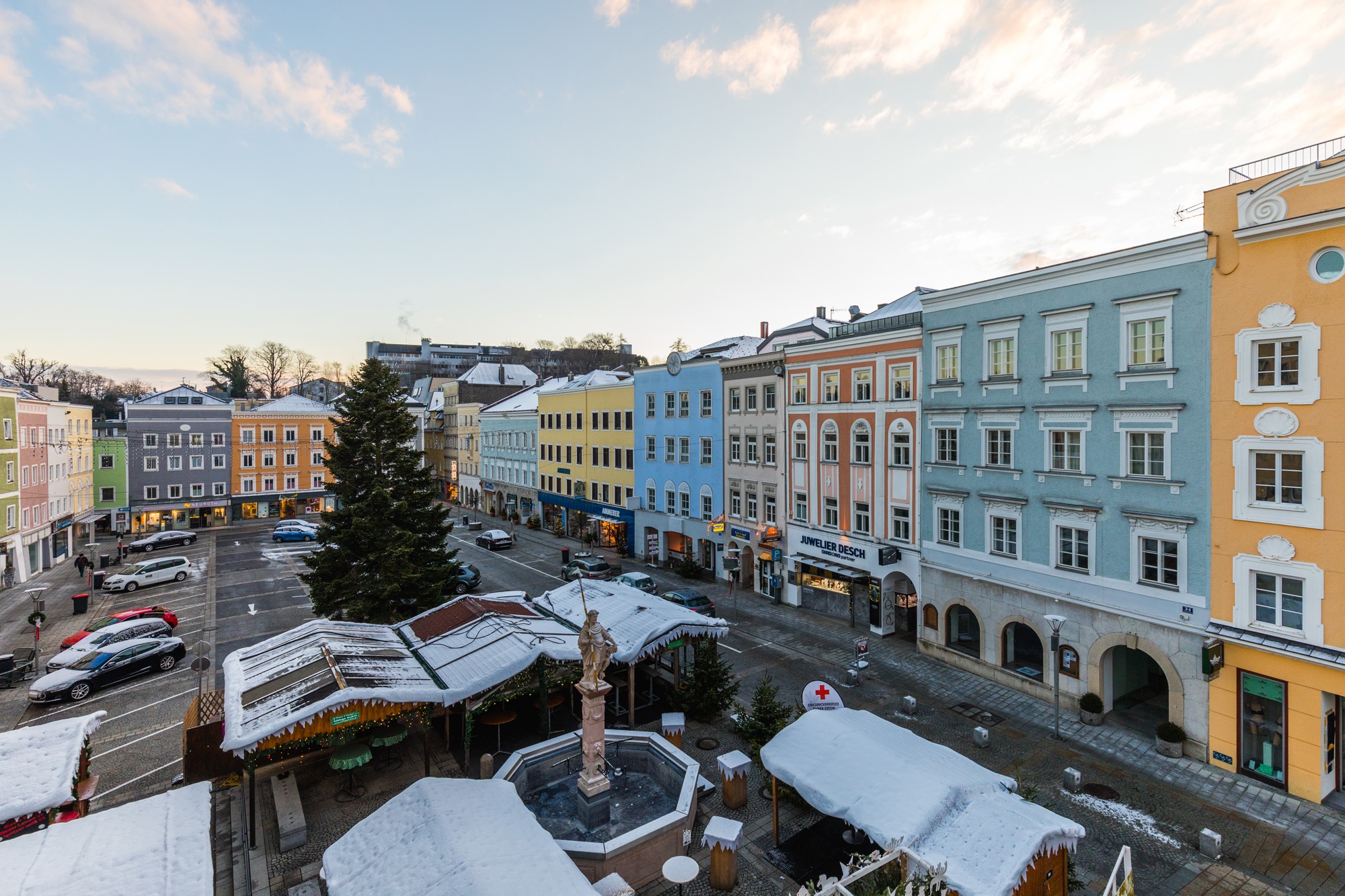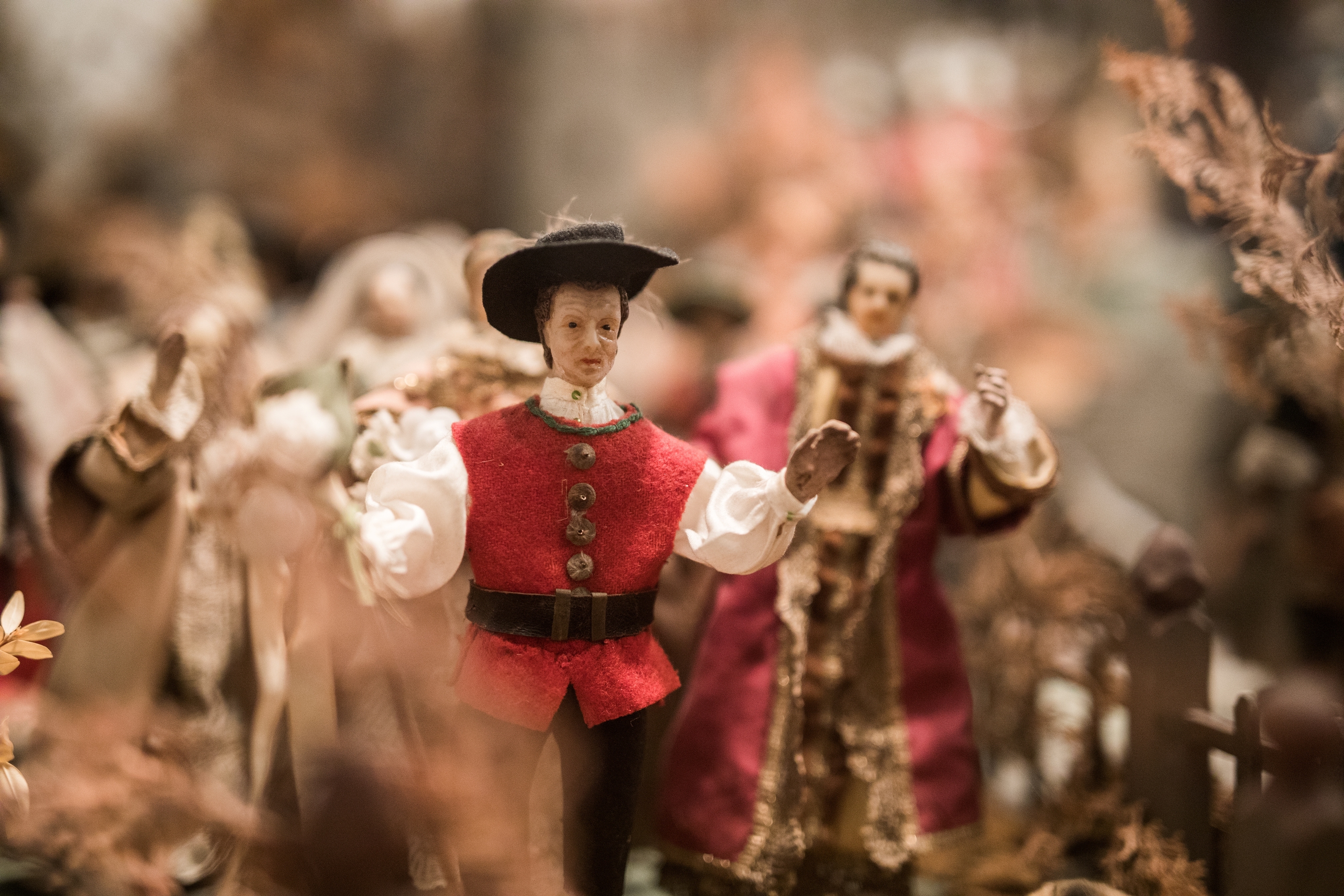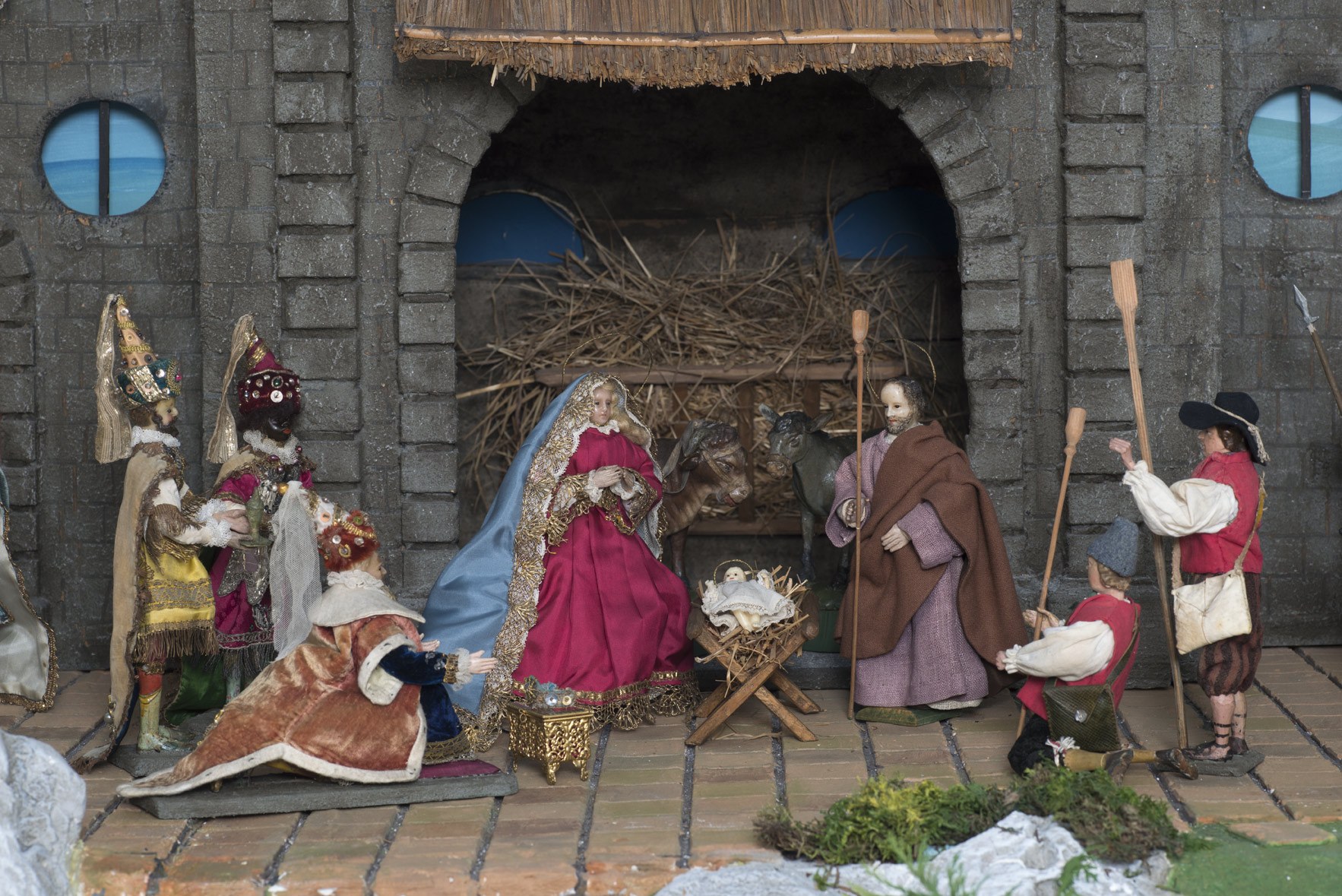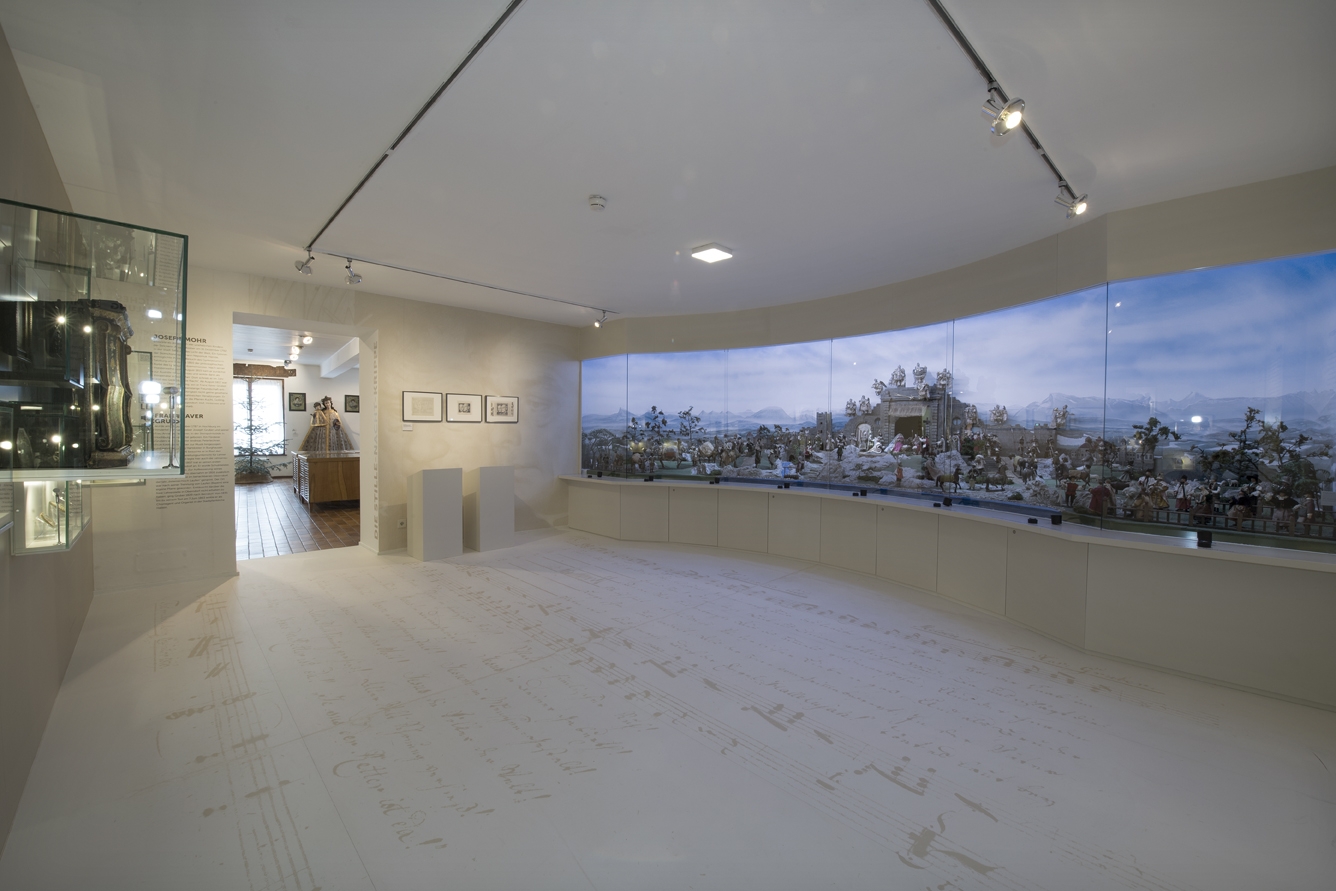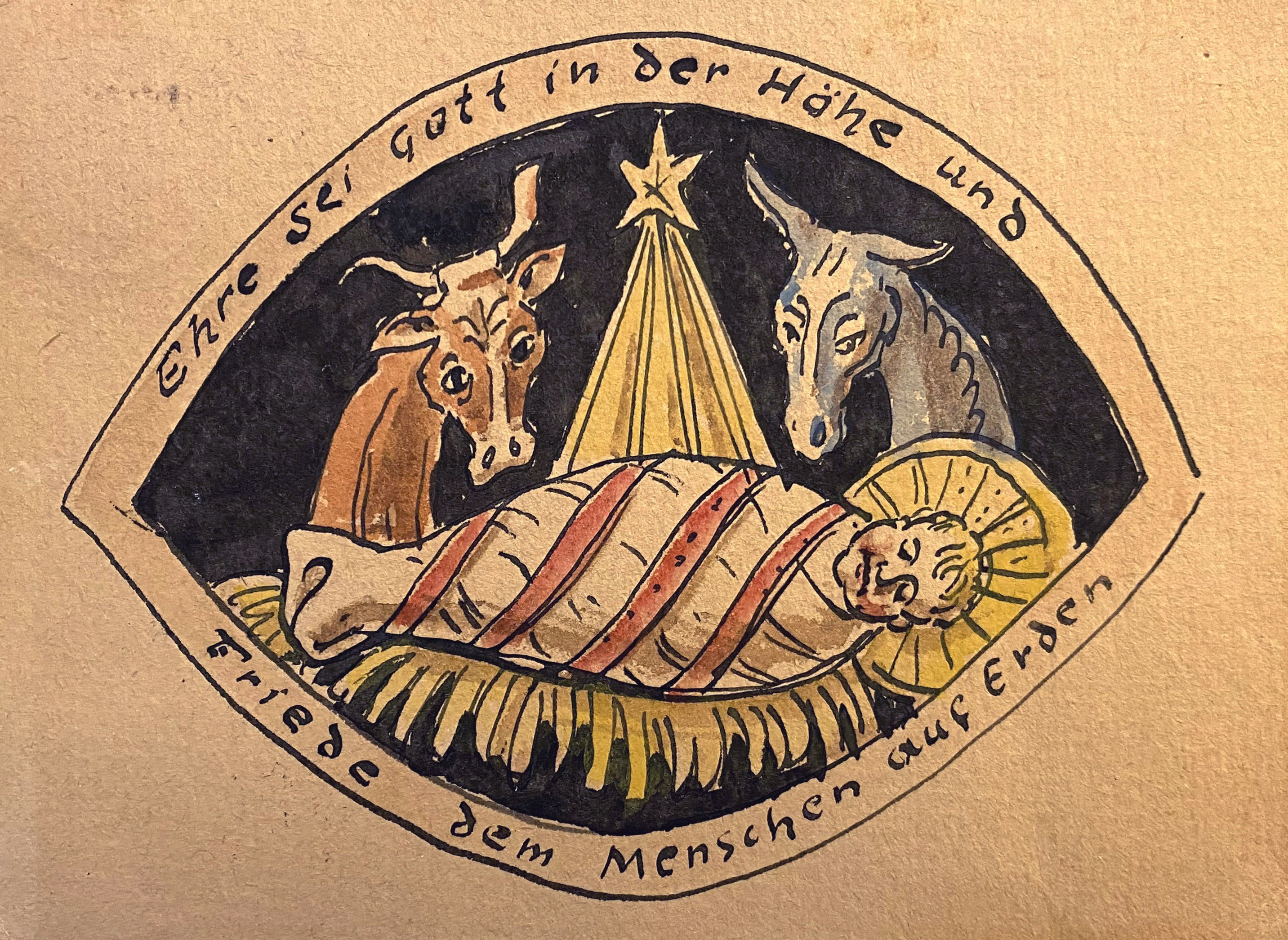Notable People
Franz Xaver Gruber
In Ried im Innkreis, Franz Xaver Gruber completed his almost three-month training as a teacher at “trivial schools”. On July 22, 1806 Gruber received his certificate, which gives an insight into teacher training at the beginning of the 19th century. Franz Xaver Gruber had “attended the lessons prescribed for trivial teachers at the local secondary school and showed during the examination that he had read the introduction and the five main parts of the prescribed type of teaching: The procedure for teaching letters, spelling, reading, writing, arithmetic; as well as religion and the German language."
After passing the exam in Ried, Gruber acquired the right to be employed in Austria. In order to be able to take up his first post as a teacher in Arnsdorf, he had to take a kind of nostrification test, a sort of equivalence test.
Pastor Johann Veichtlbauer
The pastor of St. Pantaleon, Johann Veichtlbauer, acquired the "Silent Night Crib" from Oberndorf in 1926 for his folklore collection. In 1933 he handed over his collection to the city of Ried im Innkreis.
Museums, memorials, events
Innviertel Folklore House with "Silent Night Crib" Museum
The crib, that stood in the church of St. Nikola in Oberndorf on Christmas Eve 1818 - as "Silent Night! Holy Night!" first rang out, is now in the Innviertel Folklore House Museum.
Local Community
Ried was first mentioned in a document in 1136. "Urbani de Riede" (citizens of Ried) are mentioned as early as 1180, this suggests a settlement with a market character. After the Lords of Ried died out around 1200, the area became the property of the Bavarian dukes. The border location has always been the undoing of the flourishing place.
In 1435, Duke Heinrich XVI. awarded Ried with a market-coat of arms. After the Congress of Vienna, the Innviertel finally became part of Austria. In 1857, what was then the largest market town in Austria was elevated to the status of a city by an act of grace by Emperor Franz Joseph I. With the lasting peace and the disappearance of the border location, rapid economic development began. The “Commercial Exhibition Festival”, which was held for the first time in 1867, was the cornerstone of Ried's development as a trade fair city. Today Ried is known beyond the borders of Austria for the Ried trade fair.
Ried im Innkreis has four squares in a row - Hauptplatz, Roßmarkt, Stelzhamerplatz and Kirchenplatz - a unique urban area in this form.

